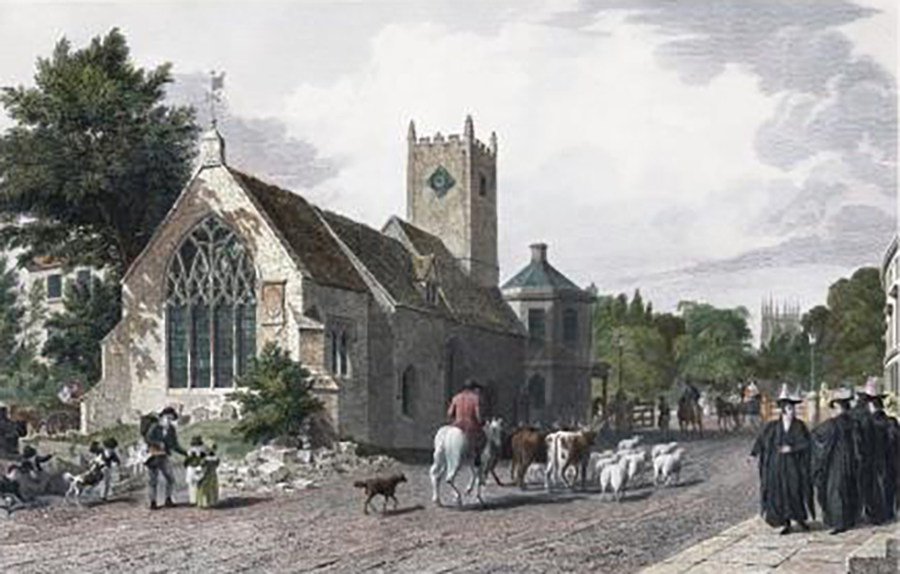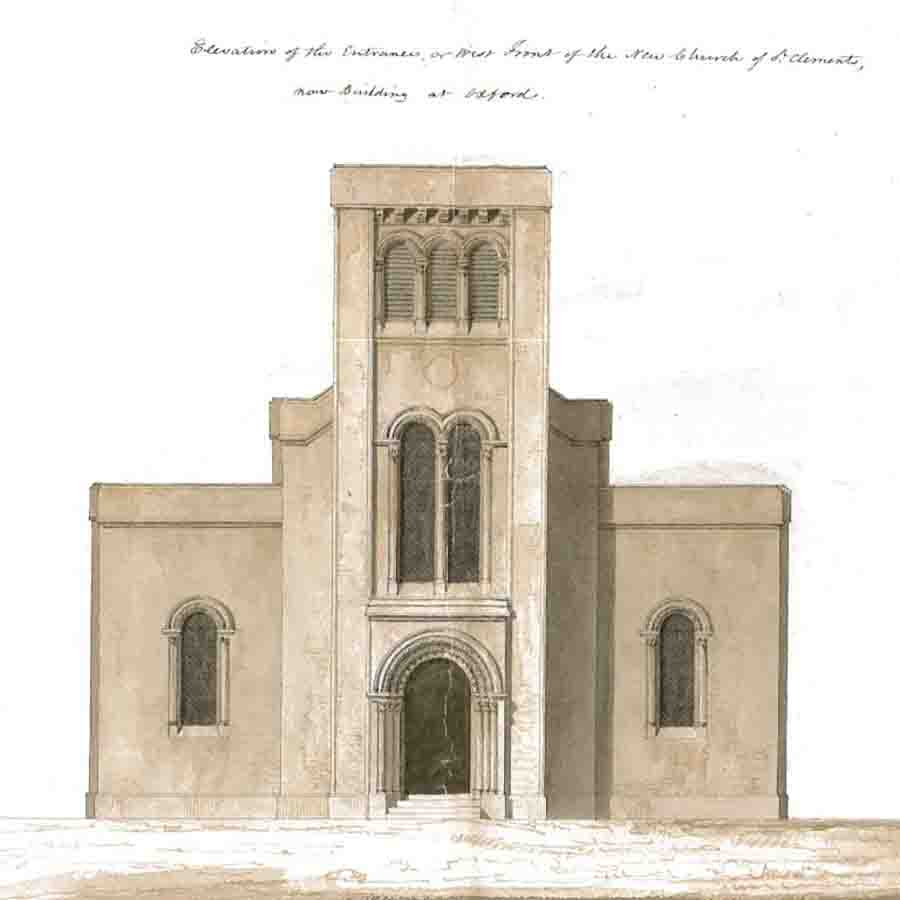St Clement’s Church was originally at what is now The Plain roundabout, strategically sited at the point where the roads from London and Henley cross the River Cherwell at Magdalen Bridge.
It served both the small suburban community of Bruggeset (“Bridge Settlement”) that surrounded it as well as the largely rural area that eventually became East Oxford.
The first written record of the church dates from 1122, when it was one of the royal chapels given to St Frideswide’s Monastery by Henry I, but it was probably founded before that date.

The parish was outside the City of Oxford until 1836. This gave it an economic advantage and by the late 18th century it had become a thriving commercial area as booksellers, tailors and other trades-people and artisans took advantage of freedom from the City’s high rates and restrictive trading regulations.
St Clement’s also attracted fringe communities – several Jewish families settled here in the 1720s, a small Roman Catholic chapel was built in 1798 and the early 19th century saw a strong non-conformist presence in the area`.
In the early 1800s, slum clearances in Oxford saw St Clement’s expand rapidly, with over three hundred new houses being built between 1821 and 1824. The old church was small, seating 250, and services were “… very much interrupted and annoyed by the continued noise of carriages passing to and fro … “, so a plan was formed to build a new church on a new site to accommodate the growing population.
As the then rector, Revd John Gutch, was in his 80s, the decision was made to appoint a curate to assist the rector and raise money for the new church.
John Henry Newman, later Cardinal Newman, became curate in 1824. Although he was only at St Clement’s for two years, Newman had an enormous impact on the parish, becoming widely respected as “a proper minister”. He visited every home, started a Sunday school and preached regularly to a packed church.

Thanks to Newman’s fundraising, the present church was built in 1827-28. It was built by John Hudson of Oxford on land in Hacklingcroft Meadow, given by Sir John Lock. The architect was Daniel Robertson, who went on to design the Clarendon Press buildings in Walton Street. The building is an early example of the Neo-Norman style, although Pevsner describes it as “patently Georgian Norman”.
The interior underwent a major refurbishment in 1876, when the West Gallery was taken down and the old box pews and benches were replaced the current Norman-themed design.
The striking East window shows ten scenes from the life of Christ. It’s made of painted glass is the work of Isaac Hugh Russell, a “poor but talented” artist who lived and worked in Caroline Street, St Clement’s. It was commission in 1846 and installed in 1847.
The four north windows depict scenes on the theme of faith. They were made by A and WH O’Connor for St Martin’s Church, Carfax in 1865 and moved to St Clement’s in 1896, when St Martin’s was demolished.
St Clement’s has three bells, all brought from the old church, although only the saunce (1731) is still in the tower – the others are in the main church. The larger bell was cast by James Keane of Woodstock in 1636, whilst the smaller one is thought to date from the latter half of the 13th century.